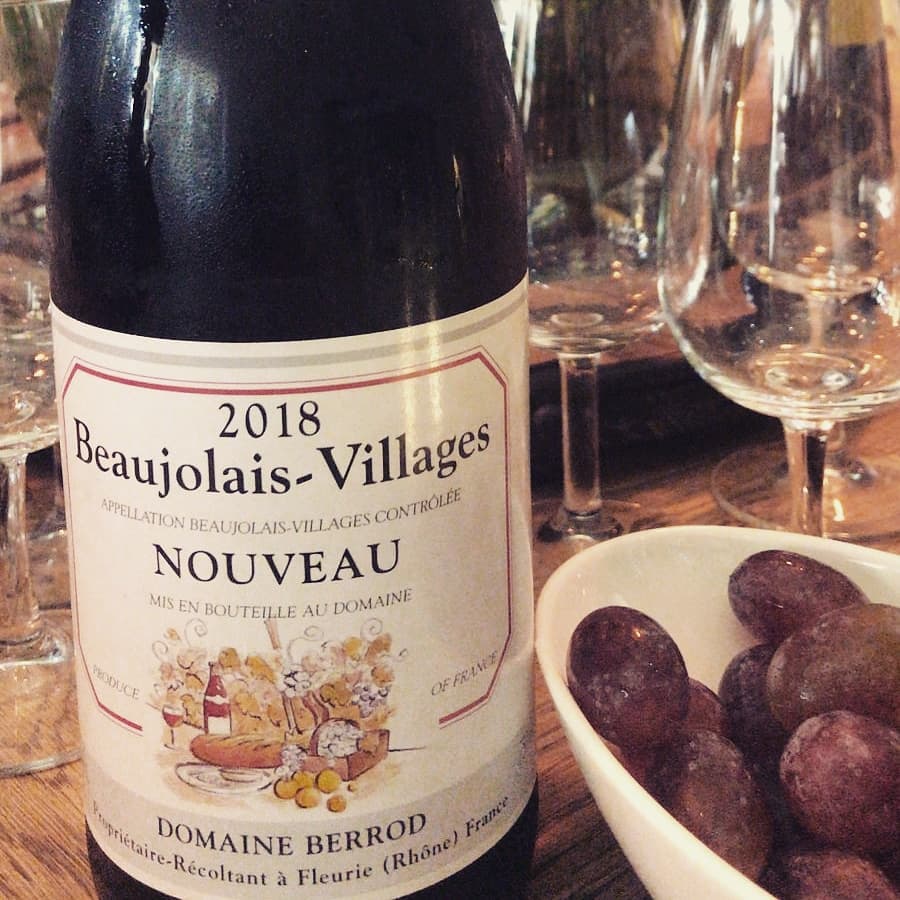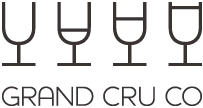- Details
- Written by Henry Conway
- Category: News
- Hits: 1321
It seems as if this rain is almost eternal now. Cold and miserable is the new norm. But then a hero emerges from the darkness... our new Maranges from Jean Claude Boisset!
Jean-Claude Boisset was radically transformed with the arrival in 2002 of viniculteur Grégory Patriat, one of the best viticulturalists/winemakers of his generation in Burgundy. Grégory had spent the previous three years working in the vineyards at Domaine Leroy and still spends a great deal of his time in the vineyards, paying his growers by the hectare in order to ensure low yields. He also prefers to work with organic growers, as he finds they produce better fruit. Unlike other Burgundian négociants, Grégory specialises in making wines from 'lieu-dits' or tiny plots of vines, something which accounts for the limited production of most of his wines.
Maranges is the southernmost wine appellation in the Côte de Beaune. The fruit is actually declassified from 'La Fussière', the best Premier Cru in Maranges. The vineyards here face south/south-east, benefitting from great sun exposure, and the soils are mostly limestone. Jean-Claude Boisset's Maranges is made with limited yields due to severe de-budding and, if necessary, green harvesting. The soil is worked without fertilizers and environmentally friendly pest management is employed to respect the beneficial local wildlife.
Overall, 2013 was a classic vintage, very 'Burgundian' in the sense that they harvested late, with 75% of the grapes picked in October. Except for an incidence of hail which affected the Côte de Beaune, there was no variation in quality between the Côte de Nuits and the Côte de Beaune. Production was small due to climatic influences including coulure and millerandage, but also hail. Virtually no areas were spared in this respect. The reds are fleshy, succulent and more concentrated than for example the 2011s, which bodes well for the cellaring of this vintage.

Jean-Claude Boisset Maranages 2013 @ £20.95 - Buy it here!
On the nose the wine is fresh and floral, with notes of violets. The nose is complemented by a clean and structured palate, with refreshing acidity and fine tannins.
Open and available to taste so as always you'll struggle to go wrong. Cheers!
- Details
- Written by Henry Conway
- Category: News
- Hits: 1540
Dont even think about forgetting our corporate gifting! This year we've bolstered our selection of boxes, wrapping and ribbons to help give your staff a little something this year. From port and sticky, sweet wines to beautiful gift-boxed champagne: we have it all!

With discounts available on bulk orders we can always lend a helping hand so give us a call on 020 8650 0085 or an email at This email address is being protected from spambots. You need JavaScript enabled to view it. and any of us will guide you through a lovely selection for anyone who's in need.
Cheers!
- Details
- Written by Henry Conway
- Category: News
- Hits: 1453
In the run up to Christmas we've gone crazy in getting a huge, varied selection available to you. Within these new bottles is this absolute gem. Don't test the Spanish! They know what they're doing!
At the foot of the Camino de Santiago, stands an eighteenth century manor mansion with large rooms and high ceilings. Its founders understood the art of winemaking, and the mansion’s floor has been stained thousands of times by the Mencía grapes. After having been abandoned for several decades, the mansion that was once a winery can now be returned to its greatness. The space is truly perfect. In 2003, Martin Códax found a home for its Cuatro Pasos.
The manor’s stables have given way to new machinery that stand next to the concrete tanks used when aging the wine. New and old come together to yield the greatest results. The spirit that was lost is now present again. You can smell the wine. There’s nothing like feeling you get in that mansion.

Cuatro Pasos Mencia, Bierzo 2016 @ £10.95 - Buy it here!
Morello cherry red in colour with violet reflections. The varietal aromas of red fruits dominate the bouquet with a subtle hint of vanilla from the oak toasting. The palate is elegant and balanced, with a fruit-driven finish.
This will be gone very soon I assume! Not much left but more will be coming soon so if you miss out it will be back in the future. Cheers!
- Details
- Written by Henry Conway
- Category: News
- Hits: 1337
It's been a wet weekend for many of us but it's not a problem as a lovely bottle or two will bring us back to normality. This time it's a new one for us! Not many of you will have tried this as of yet.
This magnificent property, which dates back to the 9th century, is also known as Château Philippe le Hardi, as it was once owned by the first Duc of Burgundy. Philippe le Hardi is famous as the person who banned the cultivation of Gamay in the Côte d'Or, saying in his edict of 1395 that only Pinot Noir could be used in the production of red wines from the already fabled slopes. Despite its long history, the property had fallen on hard times until it was taken over by the French bank Crédit Agricole in recent years. They have invested heavily, bringing in a new team to support the general manager, Gérard Fagnoni, and putting the emphasis on quality. The property has 98 hectares of vineyard, 72 of which are in Mercurey. These are remarkably well made and good value wines from the Côte d'Or and Côte Chalonnaise.

Chateau de Santenay Mercurey 'Le Roc Blanc' 2014 @ £18.95 - Buy it here!
The wine is pale gold in colour and very expressive on the nose with aromas of bright citrus fruit and white flowers. The palate has a lovely texture from the oak ageing, with concentrated flavours of white peach and vanilla balanced with racy acidity.
We are definitely on to a winner with this and it's red counterpart. Both are such a wonderful expression of Burgundy. Cheers!
- Details
- Written by Henry Conway
- Category: News
- Hits: 1478
Today’s the day you’ve all been waiting for. The 3rd Thursday of November can mean only one thing: Beaujolais Nouveau.
Beaujolais nouveau is made from the Gamay noir à Jus blanc grape, better known simply as Gamay. The grapes must come from the Beaujolais AOC, with those of the ten "cru" appellations excluded. They are grown in "stony, schistous soils". Both Beaujolais Nouveau and Beaujolais-Villages Nouveau are produced; the latter comes from the ~ 30 non-cru villages in the region. Nouveau's production is about 25% of overall production in Beaujolais. As of 2017, there are 2000 producers producing 27.5 million cases, with 40% exported from France.
By law, all grapes in the region must be harvested by hand. The wine is made using carbonic maceration, whole berry anaerobic fermentation which emphasizes fruit flavors without extracting bitter tannins from the grape skins. Grapes are loaded into a large (on the order of 20,000-U.S.-gallon (76,000 L)) sealed container that is filled with carbon dioxide. Grapes that are gently crushed at the bottom of the container by the weight of the grapes start to ferment, emitting more CO2. All this carbon dioxide causes fermentation to take place inside the uncrushed grapes (without access to oxygen, hence "anaerobic fermentation"). The resulting wine is fresh, fruity, and very low in tannins.

Beaujolais had always made a vin de l'année to celebrate the end of the harvest, but until World War II it was only for local consumption. In fact, once the Beaujolais AOC was established in 1937, AOC rules meant that Beaujolais wine could only be officially sold after 15 December in the year of harvest. These rules were relaxed on 13 November 1951, and the Union Interprofessionnelle des Vins du Beaujolais (UIVB) formally set 15 November as the release date for what would henceforth be known as Beaujolais nouveau.
A few members of the UIVB saw the potential for marketing Beaujolais nouveau. Not only was it a way to clear lots of vin ordinaire at a good profit but selling wine within weeks of the harvest was great for cash flow. Hence the idea was born of a race to Paris carrying the first bottles of the new vintage. This attracted a lot of media coverage, and by the 1970s had become a national event. The races spread to neighbouring countries in Europe in the 1980s, followed by North America, and in the 1990s to Asia. In 1985, the date was changed to the third Thursday in November to take best advantage of marketing in the following weekend.
This "Beaujolais Day" is accompanied by publicity events and heavy advertising. The traditional slogan, even in English-speaking countries, was "Le Beaujolais nouveau est arrivé!" (literally, "The new Beaujolais has arrived!"), but in 2005 this was changed to "It's Beaujolais Nouveau Time!". In the United States, it is promoted as a drink for Thanksgiving, which always falls exactly one week after the wine is released (on the fourth Thursday of November). Many producers release the nouveau with colourful or abstract design that changes every year, usually as an evolution from the previous year's design.
We don’t have much so do not miss your chance for a bottle of this years Beaujolais Nouveau. Cheers!
- Details
- Written by Henry Conway
- Category: News
- Hits: 1447
Corporate gifting! This year we've bolstered our selection of boxes, wrapping and ribbons to help give your staff a little something this year. From port and sticky, sweet wines to beautiful gift-boxed champagne: we have it all!

With discounts available on bulk orders we can always lend a helping hand so give us a call on 020 8650 0085 and any of us will guide you through a lovely selection for anyone who's in need.
Cheers!




